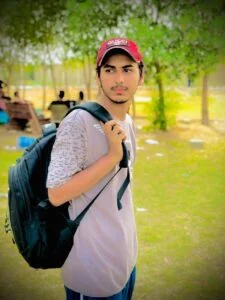Snake plants, also known as Sansevieria, are renowned for their resilience and ability to thrive in various conditions. However, even these hardy plants can sometimes exhibit signs of distress, such as drooping leaves. If you’ve noticed your snake plant drooping, don’t worry – there are several potential causes and solutions to explore.
1- Overwatering
The Problem:
Root rot is often the most common reason behind a drooping Snake Plant. This issue typically arises when the plant is overwatered, or the potting mix retains too much moisture without proper drainage.
Signs:
- Mushy, yellowing, or browning leaves
- A foul odor from the soil
- Leaves falling over easily
Solution:
- Act quickly: Unpot the plant and inspect the roots. Prune away any dark, mushy roots. Healthy roots will be firm and white.
- Repot: Choose fresh, well-draining potting mix. A pot with a drainage hole is essential to help excess water escape.
- Adjust watering: Snake plants only need water when the soil is completely dry. A thorough soak followed by a long drying period is best.
2- Underwatering (Yes, It Can Happen!)
The Problem:
While snake plants are drought-tolerant, they still need some moisture. Underwatering can occur if the plant is not receiving adequate moisture, leading to dehydration and drooping leaves.
Signs:
- Dry, crispy, wrinkled leaves
- Leaves curling inwards
- Stunted growth
Solution:
To remedy underwatering, thoroughly water the plant until moisture drains from the bottom of the pot. Be sure to water consistently, allowing the top inch of soil to dry out between waterings. Adjust your watering schedule based on environmental factors such as temperature and humidity.
3- Not Enough Light
The Problem:
Snake plants are known for tolerating low light, but they still need some sunlight. Without sufficient light, your plant will become weak and leggy.
Signs:
- Drooping, pale leaves
- Loss of variegation (in patterned varieties)
- Slow or no new growth
Solution
- Relocate: Move your plant to a brighter spot. Aim for bright, indirect light for several hours daily. Avoid harsh direct sun, which can scorch the leaves.
4- Cold Temperatures
The Problem:
Snake plants are native to tropical regions and prefer temperatures above 50°F (10°C). Exposure to cold drafts or low temperatures can stress the plant and cause drooping leaves.
Signs:
- Drooping, mushy leaves
- Dark spots on the leaves
Solution:
Ensure that your Snake Plant is kept in a warm environment away from drafty windows or doors. Room temperatures between 60°F to 80°F (16°C to 27°C) are ideal.
5- Rootbound Plant
The Problem:
Over time, snake plants can become rootbound, meaning their roots outgrow the pot and become crowded, causing stressed roots and poor nutrient absorption, which can lead to drooping.
Signs:
- Roots growing out of the drainage holes
- Roots circling the inner walls of the pot
- Difficulty removing the plant from its container
Solution
- Repot time: Repot your Snake Plant into a larger pot with fresh potting soil to allow room for root expansion. Choose a pot that is 1-2 inches larger in diameter than the current one.
6- Poor Drainage – the Wrong Soil and Pot
The Problem:
Waterlogged conditions that result in drooping can be caused by using the wrong type of soil or by using a pot without drainage holes.
Signs:
- Slow draining water
- Soggy soil that never seems to dry
- Wilting and yellowing leaves
Solution:
- Improve the mix: Repot with a well-draining potting mix formulated for succulents or cacti. You can even mix regular potting soil with sand or perlite.
- Drainage is key: Choose a pot with drainage holes.
7- Not Enough Nutrients
The Problem:
Snake plants require minimal fertilization, but a lack of nutrients can still affect their overall health and vigor. Insufficient nutrients can result in weak, drooping foliage and poor growth.
Signs:
- Stunted growth
- Pale or yellow leaves
Solution:
- Balanced feed: Feed your Snake Plant with a balanced, water-soluble fertilizer every few months during the growing season. Be careful not to over-fertilize, as this can also lead to problems.
8- Pests
The Problem:
Pests such as spider mites and mealybugs can stress the plant by sucking sap from the leaves, causing them to droop.
Signs:
- Tiny webs or cotton-like substances on the plant
- Yellow spots on leaves
Solution:
Treat infestations promptly with insecticidal soap or neem oil. Remove heavily infested leaves and isolate the plant to prevent the spread to other houseplants.
Why Is My Snake Plant Falling Over?
The most common cause of a snake plant falling over is overwatering, which leads to root rot and weakens the base of the leaves. Other possible causes include poor drainage, inadequate light, or a pot that’s too large. To fix this, water only when the soil is dry, use well-draining soil, provide bright indirect light, and repot if necessary.
How to Revive an Overwatered Snake Plant
If your snake plant is suffering from overwatering, stop watering immediately and let the soil dry out completely. Remove any mushy or rotting roots and repot the plant in fresh, well-draining soil.

How to Fix a Falling Snake Plant
- Adjust watering habits and ensure proper drainage.
- Provide adequate light.
- Repot if necessary.
- Trim heavy or damaged leaves.
- Check for pests and treat accordingly.
With the right care, your snake plant can regain its strength and stand tall again!
Final Thoughts
While Snake Plants are generally low-maintenance, they can still run into problems like drooping. By understanding the potential causes and applying the appropriate solutions, you can restore your plant’s health and keep it thriving. Always monitor your plant’s environment and adjust care routines as needed to ensure your Snake Plant remains a vibrant part of your home décor.
Frequently Asked Questions (FAQs):
Why do my snake plant leaves keep falling over?
The most common reasons are overwatering, poor drainage, lack of light, or a root-bound snake plant.
Can I cut off drooping snake plant leaves?
Yes, you can trim drooping or damaged leaves using clean, sharp scissors. Cut them at the base near the soil for a neater look.
How often should I water my snake plant?
Water your snake plant only when the top two inches of soil are dry. In colder months, reduce watering to once a month.
Do snake plants need support to stay upright?
If your snake plant has heavy or tall leaves, you can use small stakes or ties to provide support and keep them standing straight.
Can I repot my snake plant if it’s falling over?
Yes, repotting can help if the plant is root-bound or unstable. Choose a slightly larger pot with good drainage and fresh soil to give it more room to grow.







9 thoughts on “Why is My Snake Plant Drooping? Causes and How to Fix It”
Usually I don’t learn article on blogs, however I wish to say that
this write-up very pressured me to check out and do it!
Your writing style has been surprised me. Thank you, very nice post.
Great post. I will be dealing with a few of these issues as well..
I seriously love your blog..
Prett nice post. I just stumbled upon your weblog and wanhted
to say that I’ve truly enjoyed surfing around your
blog posts. After all I will bbe subscribing to your rss
feed and I hoope you write again very soon!
This excellent website certainly has all of the information and facts I wanted concerning this subject and didn’t know who to ask.
This is a topic which is close to my heart… Many thanks!
Having read this I thought it was really informative.
I appreciate you finding the time and effort to
put this content together. I once again find myself personally
spending a significant amount of time both reading and commenting.
Hello there! I could have sworn I’ve been to this blog before but after browsing through
some of the post I realized it’s new to me. Anyways,
I’m definitely glad I found it and I’ll be book-marking and checking back frequently!
It’s really a nice and helpful piece of info.
I am happy that you simply shared this useful
information with us. Please keep us informed like this.
Thank you for sharing.